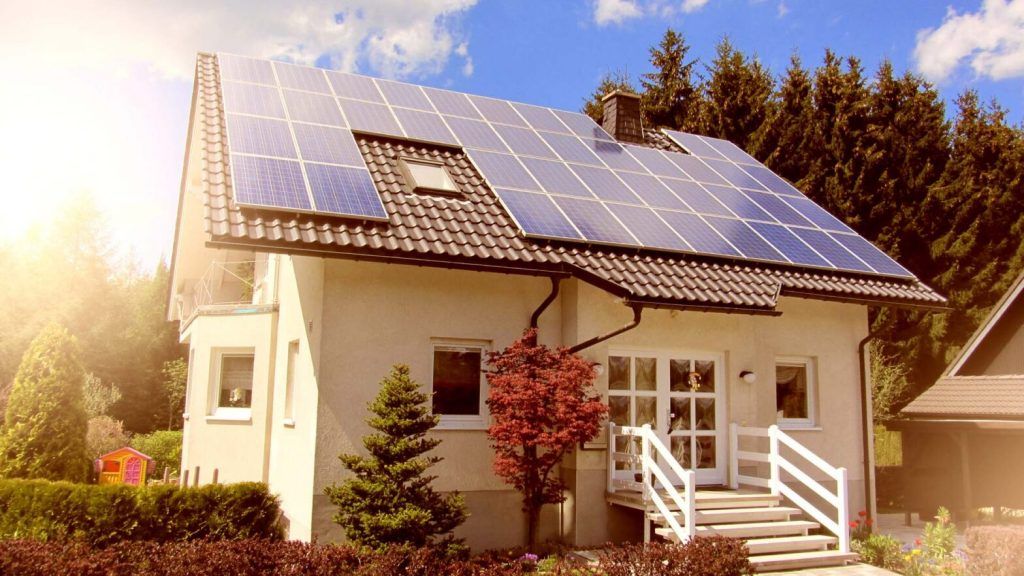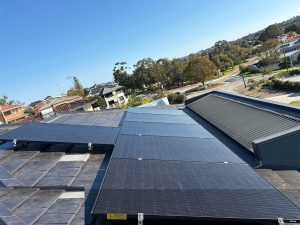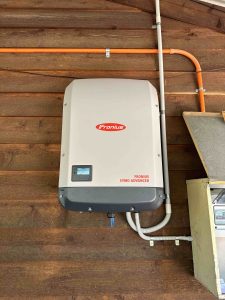With the hike in energy prices, more and more people are turning to solar energy as a viable option to power their homes and businesses. While installing a solar system in Australia, it is essential to know how and at what time of day do solar panels work best so as to calculate whether one can get the most out of their solar system.
Solar systems in Australia work best when the sun is shining. But the strength of sun’s radiation is not always the same. It varies with location, days and seasons.
What time of day do solar panels work best?
Solar cells, also called photovoltaic cells, convert sunlight into electricity. Though solar panels generate electricity throughout the day, power generation is maximum only when sun shines directly on them. The power generation capacity of solar panels is dependent on the angle of rays that hit the modules.
Peak power occurs when the sun rays are at right angles or perpendicular to the modules. When the rays deviate from perpendicular, solar energy gets reflected. The highest solar generation during day time is usually from 11 am to 4 pm.
One of the main criteria while installing solar panels is whether they will receive ample peak sun hours. It is very important because electricity generation is directly proportional to the solar irradiance that hits the panel.
Facts about peak sun hours
- A peak sun hour is referred to an hour when the intensity of solar irradiance reaches an average of 1,000 watts of energy per square meter.
- Peak sun hours are not the same as daylight hours. When the sun reaches the highest point in the sky at noon, solar radiation peaks.
- Peak sun hours received by the panels depend on the season, location of residence as well as the location where solar panels are placed.
The number of peak sun hours in Australia increases during the summer months and is lesser during winter. Regions far north are more prone to peak sun hours than regions far south because sunlight is not that strong in the south as it gets filtered through more layers of the atmosphere.
Increased cloudiness, sun’s lower position in the sky and shorter days are the reasons for less peak sun hours in Australia during winter season. This will affect the amount of electricity generated by solar system in Australia.
Install location has most importance
Sun tracking mounts are of use in such instances. It automatically tilts the solar arrays so that they face the sun and enhance power output. Solar systems in Australia are installed to face north.
Depending on the location, type of load and available solar input, fixed frames are set at the optimum tilt angle for the system. The system designer selects the right frame for every system.
The Peak sun hours received by a same house will be different for its two parts. It depends on the direction of the panel. Shading caused by obstructions can also hinder peak sun hours.
Peak sun hours can be calculated by adding up the solar irradiance of an entire day and then expressing it in terms of the equivalent number of hours with 1000 W/m2.
If the total solar irradiance of a place is 6650 w/m2, then that place would have 6.65 peak sun hours.
Calculate the number of solar panels required
Based on the peak sun hours of an area, one can calculate the number of solar panels required to meet the energy demand. The angle of the roof, as well as the efficiency of the panels, are factors of energy production. Apart from that, obstructions around the house that block the sun rays also affect peak sun hours.
A solar panel should theoretically produce 1,000 W /m2 during peak sun hours. In reality, even if the panel works at full STC efficiency, it can produce only 300 watts in one hour. Depending on panel size, cell technology and efficiency solar panels come in wattages ranging from 150-370 watts per panel.
If the power consumption of a house is 28 kWh per day, 3 such panels will be required to produce 1 kWh, and 84 such panels are needed to produce 28kW of energy during one peak sun hour.
Quality and efficiency of solar panel
The number of solar panels depends on the quality and efficiency of solar panels as well. Some panels absorb more sunlight, some are stronger and resistant to cracking and corrosion while some other panels have microinverters which can optimize power conversion at source.
When the efficiency of solar panels scale up, it will produce more wattage. As the panels produce more wattage, there is a need of only a lesser number of solar panels on the roof.
If there is large roof area, one can go for less efficient larger panels at a low cost to hit the target. For a small roof area, one need to go for highly efficient, smaller panels.
Due to the quality and efficiency of a home solar system, similar solar systems may produce different amounts of energy. The same system may generate twice the electricity in the summer season as days are longer and the sun is in a high position.
A professional installer assesses the roof area and decides how to physically arrange the solar panels to attain the required power for daily consumption.
For optimum functioning of a solar system in Australia, the installation has to be done by a qualified installer. Poor solar installations will affect energy generation, thus hampering the return on investment.
Do research on panels, inverters, and Installers
Before installing solar power system, it would be ideal to do a bit of research on solar panels, solar inverter and other variables that affect solar output. Make sure that solar panels are a right decision for your home.
While assessing the return of investment of a solar system in Australia, one should consider the electricity rates and net metering laws in the area along with thinking about what time of the day do solar panels work best.
Residents in locations with low peak sun hours but with high electricity rates and net metering can save more money than residents with higher levels of peak sun hours but cheap electricity and no net metering.
Even in states with low peak sun hours, high electricity bills and terrific state solar incentives have made solar energy a profitable recommendation.
It would be ideal to know what time of day do solar panels work best in a geographic area so as to get an accurate estimation of the energy production by the system.
Any location that gets around 4 peak sun hours is considered a good location to produce useful amounts of solar energy. There is no scarcity in peak sun hours of Australia.
Australia enjoys high sunshine hours. But there is a difference in the distribution of sunshine in various Australian cities.
Perth is the sunniest city with 3,200 hours annually and Melbourne is the least sunny city with 2,200 hours annually. Australia has an average of 6 peak sun hours in its various cities.
The average daily sunshine hours of various Australian cities
Month Bris Syd Can Mel Adel Perth
Jan. 8 8 9 8 10 11
Feb. 7 7 8 8 9 10
Mar. 7 7 8 6 8 9
Apr. 7 7 7 5 6 7
May. 7 6 6 4 5 6
Jun. 7 6 5 3 4 5
Jul. 7 7 5 4 4 5
Aug. 8 8 6 4 5 5
Sep. 8 8 8 5 6 7
Oct. 8 8 8 6 7 9
Nov. 8 8 9 7 8 10
Dec. 8 8 9 7 9 11
Are solar panels are a good investment?
Once we know the average peak sun hours of an area, we can determine whether solar panels will be a good investment or not.
Google insolation maps and charts can provide one with information regarding peak sun hours of Australia.
An insolation meter can also be of help in calculating peak sun hours. It calculates the temperature, light intensity and solar power supply to solar panels.
With the ample peak sun hours of Australia, one need not hesitate to think about what time of day do solar panels work best? Getting a solar system in Australia would be a worthwhile investment.
With hardly any negative environmental effects, solar power has become an oft-chosen energy option in the world of sustainability. Going solar would be the first step forward in increasing the usage of renewable energy and reducing carbon footprints.
Can we install solar for individual flats in the apartment?
Why 6.6kW rooftop solar system is more popular in Australia?
How long do solar panels long last? Solar panels lifespan explained








